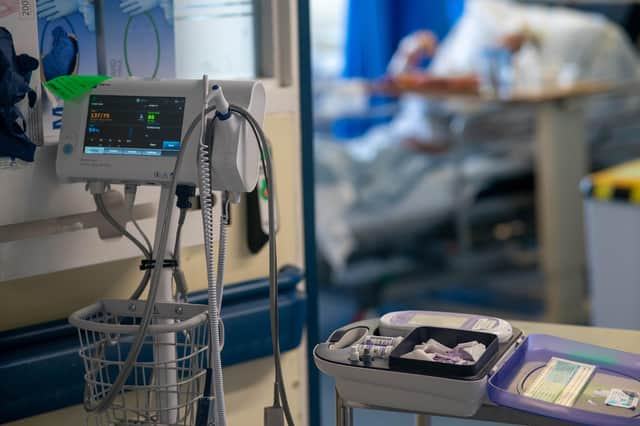More beds occupied at Pennine Care NHS Foundation Trust


More hospital beds were occupied in the first three months of the year at Pennine Care NHS Foundation Trust than a year before, new figures show.
A think tank has warned high levels of occupancy can lead to worse patient care in hospitals.
Advertisement
Hide AdAdvertisement
Hide AdNew figures from NHS England show 90.4% of 494 overnight beds were occupied at Pennine Care NHS Foundation Trust in the three months to March.
This was a slight rise from 89.7% during the same period a year before.
Sarah Scobie director of research at the Nuffield Trust think tank, said: “No health system should be running their hospitals this hot."
She warned a lack of beds could "lead to dangerously busy and difficult conditions" in accident and emergency departments, waiting rooms and corridors.
Advertisement
Hide AdAdvertisement
Hide Ad"Frequent high levels of beds in use have contributed to record waiting lists we are seeing now, and there is also evidence that overcrowded hospitals increase risks to patients and link to higher rates of mortality," she added.
In response, Ms Scobie urged for greater long-term investment in buildings and equipment, alongside improving care services outside of hospitals.
Across England, occupancy rates rose again in the last quarter, reaching 89.8% – just shy of the record of 90% in March 2018.
For general and acute settings, this figure was 92.3% – also the highest rate since the pandemic began.
Advertisement
Hide AdAdvertisement
Hide AdEven with the coronavirus pandemic receding, the NHS in England has faced a difficult winter.
Issues with pay and working conditions have led many staff at the health service to strike in recent months.
A Department of Health and Social Care spokesperson said: "Cutting waiting lists is one of the government’s top five priorities and we are investing up to £14.1 billion in health and social care over the next two years, on top of record funding.
"Waiting times have substantially reduced from the peak of winter pressures in December and the NHS has set out ambitious plans to improve access to care. This includes delivering 5,000 additional permanent hospital beds for next winter as well as an extra 3,000 virtual ward beds to safely care for people from home, resulting in over 10,000 in total by autumn."
"Over the next two years we are also investing £1.6 billion to support timely and safe discharge of people from hospital into the community," they added.